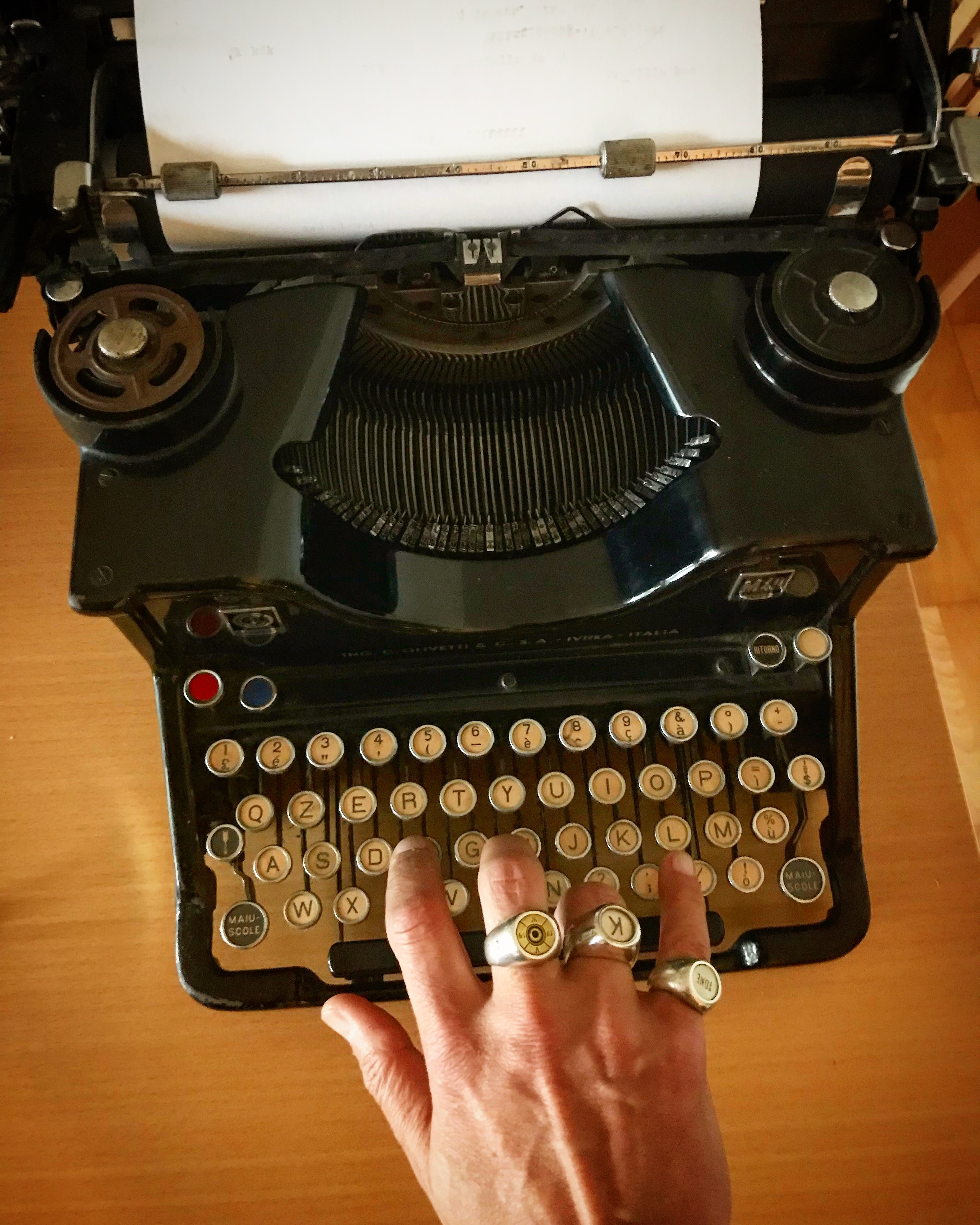
You have to traverse the Arno at the height of Ponte alla Carraia. Then take the Via dei Serragli and watch out for a wooden sign left apparently on the Florentine cobblestone at the junction to a narrow street. Follow the direction the sign points to and you suddenly find yourself fronting the dusty window of an improvised storefront hiding a random display of cloth from other times. Some of them appear to be originals from mid century or beyond, some definitely high quality reproduction. The mere absence of apparent daily usage from a different era makes it easy to identity them as such. Rare new old stock become harder to apprehend these days. But Florence has been in the 1980is and 90ls – and imho still is – a place where the enthusiast can uncover vintage gems of Italian and French workwear, or British and American Militaria.
What recently caught my attention is the emotionally intense affection and affective emotionalism in regard to the “right” occasion when “to wear” the vintage garments in itself. Let me explain this further: I am sure that there are common grounds of interest inside the different dedicated groups of collectors and enthusiasts when it comes to discuss, whether an alleged historical relevance is key to the aura of a specific garment; whether, when a garment has been associated with a defined event (this seems to be the case in military clothing, where the uniform dated 1945 acquires a definite value in contrast to one dated 1952), this restricts the usage of the same exclusively to a specific arrangement (military re-enactment for example). Decontextualization of the garments by street stylists is therefore often seen with suspicion.
Wearing clothes with a pedigree, with a history, can evoke an affection that I believe is very similar to the one described by Marcel Proust in his short chapter “La Madeleine” in the first volume of his masterpiece “La Recherche du Temps Perdu”. It’s a thesis worth of further investigation.
The taste, the smell and the perfume of the tea soaked madeleine surprised young Marcel Proust with a rush of childhood memories. The apparent dark mood from the moment, when he entered the room, changed completely. I’d like to parallel this experience to the sensation that a hand of a vintage cloth and the unexpected fit offers to the new wearer. Obviously there’s already anticipation building up when discovering such pieces of cloth. And, obviously, these sensations don’t evoke real childhood memories, but rather a sensory experience and projection of lived lives from other times. It evokes a sort of emphatic understanding of the idealized lives the former wearer could have lived.
Some years ago I had the privilege to make the acquaintance of Danilo Ceri. A Florentine by genealogy, for decades researcher and archivist of vintage gems. His knowledge about the history of military and civilian clothing is fascinating.
In a recent chat with Danilo at the Hostaria da Fulvio in the Florence Oltrarno quarter, I asked him, why I don’t see him more often wearing the clothes that he sometimes uncovers and proposes to a restricted group of collectors around the world.
His answer was rather simple: when he comes across an interesting vintage piece of clothes and is able to reconnect it with its inherent history, he regards his mission as accomplished. He therefore can move on in his hunt and, by handing over the garments to a collector, he’s aware that there’s somebody who will take care of them. When seen in the light of the aforementioned madeleine effect, the act of uncovering vintage cloth for Mr. Ceri is the evocative act, where he recognizes the connection to his lifelong passion. Every piece found, identified and handed over summons this moment of physical and intellectual pleasure. This moment is central, should we try to reconstruct the psychological and physical aspects prominent in parts of the revivalist subcultures, when it comes to perform in vintage clothes.

Interesting piece, Roland.
LikeLike
Thank you, Nick!
LikeLiked by 1 person
I really like that! Thanks for your thoughts Roland.
LikeLike